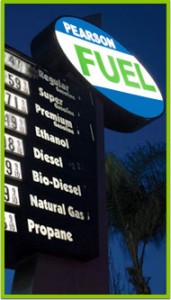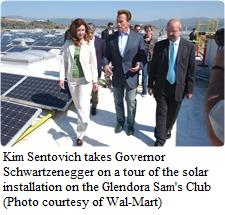 A race circuit for young drivers to get their professional careers going… while running on a clean, renewable fuel, gets started this weekend. The 2009 Volkswagen Jetta TDI Cup series kicks off at VIRginia International Raceway on April 25 & 26… the second year that VW has offered a new way of thinking about auto racing.
A race circuit for young drivers to get their professional careers going… while running on a clean, renewable fuel, gets started this weekend. The 2009 Volkswagen Jetta TDI Cup series kicks off at VIRginia International Raceway on April 25 & 26… the second year that VW has offered a new way of thinking about auto racing.
The series, sanctioned by SCCA Pro Racing, sets up the young drivers in identical factory-prepared clean diesel Jetta TDIs running on a 5 percent blend of biodiesel. That way you know it’s their driving skills and not some mechanical advantage one engine has over the other. This press release from the National Biodiesel Board points out it is the only clean diesel racing series in the United States, and Volkswagen is the only auto manufacturer participating in motorsports full time with diesel powered cars:
Houston-based HYPERFUELS is also the official fuel sponsor of the 2009 Volkswagen Jetta TDI race season, powering the series with its high performance Syndiesel® B5. That’s a blend of 5 percent biodiesel and 95 percent synthetic diesel fuel. This biodiesel blend provides a winning combination of benefits, offering the highest cetane rating of any diesel fuel on the market today and 20 percent more BTUs than conventional diesel. It has the added benefits of increased lubricity and reduced emissions from the domestically produced, renewable biodiesel component.
About 12,000 gallons of biodiesel blended fuel will be used to power the 2009 Volkswagen Jetta TDI Cup series, from the Jetta TDI race cars running on B5, to the transport trucks and generators running on 20 percent biodiesel blends. The overall carbon emissions of the series will be reduced by more than 33,760 pounds.
Clark Campbell, Motorsport Manager for Volkswagen of America, Inc. said, “The addition of Syndiesel® B5 in the Jetta TDI Cup race cars further demonstrates the feasibility of biodiesel as an alternative fuel source for American consumers, and supports the clean and green racing of the Jetta TDI Cup series. Volkswagen also supports the use of up to B5 biodiesel blends in all of its TDI clean diesel powered vehicles available at local Volkswagen dealerships today.”
By the way, Jess Hewitt, President of HYPERFUELS, is also the Chairman of the National Biodiesel Board’s marketing committee.



 Public support for biofuels continues to grow in Canada according to national poll results released today. The poll was conducted by Praxicus Public Strategies and funded by the
Public support for biofuels continues to grow in Canada according to national poll results released today. The poll was conducted by Praxicus Public Strategies and funded by the  California has adopted the first-ever fuel requirement that is carbon-based – and that’s a good thing. “What is frustrating to the ethanol industry is that the board still went ahead and approved a program that has some really ridiculous land use data,” says
California has adopted the first-ever fuel requirement that is carbon-based – and that’s a good thing. “What is frustrating to the ethanol industry is that the board still went ahead and approved a program that has some really ridiculous land use data,” says  In what might be one of the first deals of its kind,
In what might be one of the first deals of its kind,  AE Biofuels, based in Cupertino, California just launched a 9,000 square foot demonstration facility in Butte, Montana that will be producing cellulosic ethanol from various feedstocks. To date, they are utilizing various grasses, wheat straw, corn stover, corn cobs, and bagasse. The company is working with
AE Biofuels, based in Cupertino, California just launched a 9,000 square foot demonstration facility in Butte, Montana that will be producing cellulosic ethanol from various feedstocks. To date, they are utilizing various grasses, wheat straw, corn stover, corn cobs, and bagasse. The company is working with  “Adopting this standard sets a dangerous precedent about the application of unproven science to industries across the country,” said Bob Dinneen, President and CEO of the
“Adopting this standard sets a dangerous precedent about the application of unproven science to industries across the country,” said Bob Dinneen, President and CEO of the  General Wesley Clark, co-chairman of
General Wesley Clark, co-chairman of  According to
According to  In a statement, the institute said the team, led by Yugen Zhang, used N-heterocyclic carbenes (NHCs), an organocatalyst in the chemical reaction with carbon dioxide. NHCs are stable and the reaction between NHCs and carbon dioxide can take place under mild conditions in dry air, the statement said, adding only a small amount of the catalyst was needed.
In a statement, the institute said the team, led by Yugen Zhang, used N-heterocyclic carbenes (NHCs), an organocatalyst in the chemical reaction with carbon dioxide. NHCs are stable and the reaction between NHCs and carbon dioxide can take place under mild conditions in dry air, the statement said, adding only a small amount of the catalyst was needed. A pipeline in the Southeastern United States that has already tested moving biodiesel (see
A pipeline in the Southeastern United States that has already tested moving biodiesel (see  That familiar Wal-Mart smiley face might be glowing like the sun as the company has upped its commitment to sustainability efforts by adding solar panels to 10 to 20 Wal-Mart facilities in California.
That familiar Wal-Mart smiley face might be glowing like the sun as the company has upped its commitment to sustainability efforts by adding solar panels to 10 to 20 Wal-Mart facilities in California.